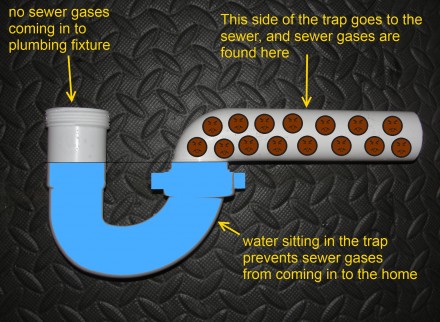Every homeowner needs to know a bit about plumbing. Indoor plumbing includes the pipes, pipe fittings such as valves, tees and unions, and the fixture attachments used to furnish your household with clean water and transport dirty water away from your home. Plumbers joke that there are just three things to remember: hot water lines attach to the left, cold to the right, and water runs downhill. I could easily add two more: frozen water breaks pipes and no plumbing lasts forever. Planning ahead can save you save you the trouble of dealing with a wet basement.
Types of Water Lines
The water pipes in older homes were often made of galvanized iron or steel. Although the galvanizing protects the outside of the pipes, the exposed metal on the pipe’s interior gradually deteriorates from constant exposure to water. If you do not have good water pressure, test for corrosion in the pipes by opening the sink and tub or shower faucets in your bathroom. Watch to see if the flow of water slows noticeably in the sink when you flush the toilet. If it does, your pipes may be partially plugged.
Water lines in newer homes are likely made of copper or plastic. Copper is durable but will corrode if the water is too acidic. Pipes made of cross-linked polyethylene, or “PEX,” became the material of choice in the 1990s because it is flexible enough to curve around obstructions without breaking. Chlorinated polyvinyl chloride, or “CPVC,” pipe is another type of plastic that is easy to install. Polypropylene pipe, widely used in Europe, is a rigid plastic pipe that joins together by applying heat. It carries no health risks and is very durable. All of these types of pipes are options you should consider. Choose depending on your household needs and personal preferences.
Basement Plumbing Precautions
Now, to the basement. Before starting a basement plumbing project, determine where the cold water supply line enters your home. Then, follow the line to your hot water heater. Find out how the sewage leaves your home and travels to the main sewer line. If the sewer pipes run above the level of the basement floor, you will need to choose a system to force the wastewater upward and out through the existing lines.
If your home came with an unfinished basement, it might have plumbing stub-outs already installed. Look at your basement floor to see if there are short pipe ends sticking up. Often, these are white and are made of polyvinyl chloride, or “PVC.” The ones with smaller diameters are usually for connecting sink drains. The larger ones may be designed for a toilet, tub or shower.
If these stubs are capped off, do not remove the caps until you are ready to install plumbing fixtures. If you do, fumes from the sewer line may escape into your basement creating a stench you do not want to run rampant. A stub that is meant for a bathtub or shower should have a built-in curve, known as a “gooseneck” or “P-trap,” beneath the floor to trap sewer fumes so that they cannot enter the basement. Water must be standing in the gooseneck in order for it to fulfill its purpose, so if you don’t use your tub often, be sure to run water through occasionally. There may not be a gooseneck between a sink or toilet stub and the sewer line, so check thoroughly.
Good Choices Ensure Plumbing Success
The addition of a modern bathroom, kitchen or laundry to your basement is sure to increase the enjoyment of being at home, whether the completed project is designed for family use or for entertaining. Careful investigation of what already is there, wise decisions regarding materials and labor, and compliance with state and local building codes ensure the success of your project and add to the value of your home.
